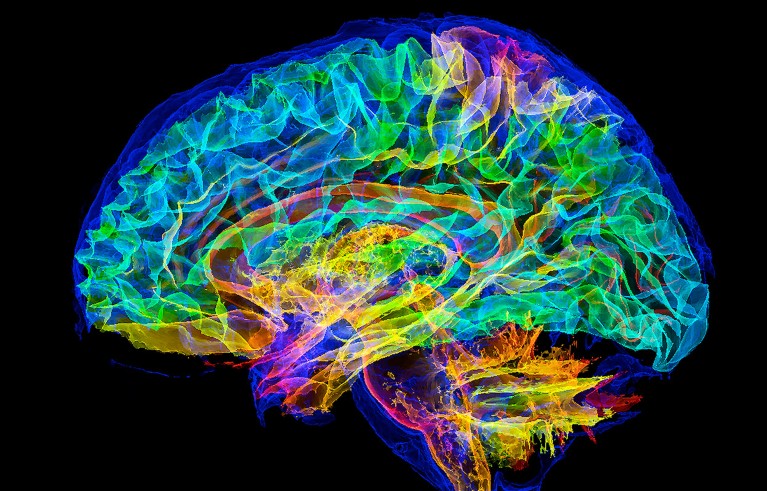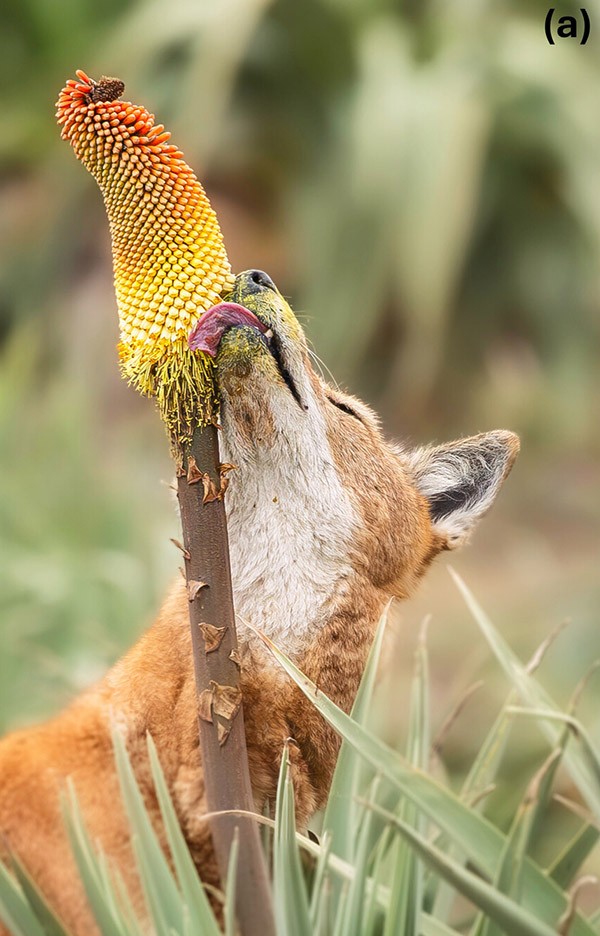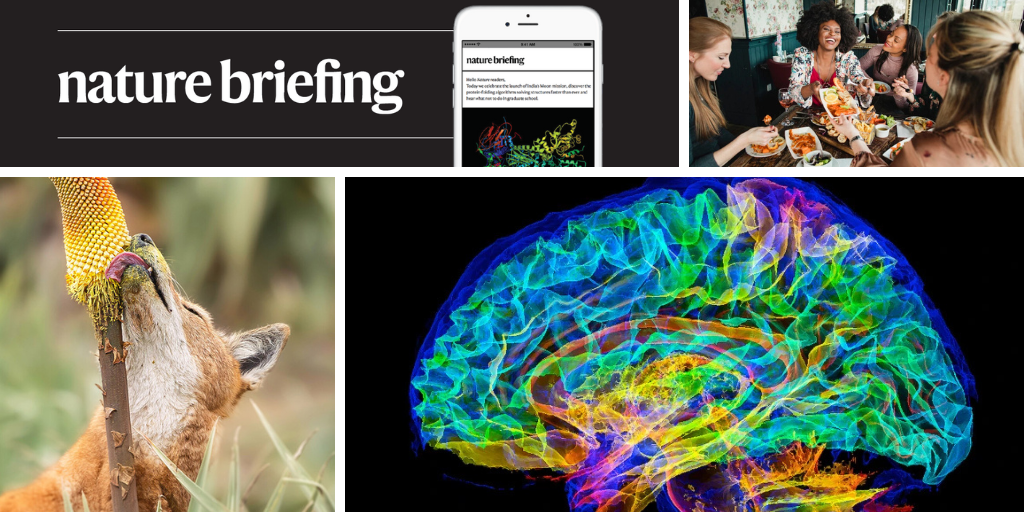Hello Nature readers, would you like to get this Briefing in your inbox free every day? Sign up here.

Credit: K H Fung/Science Photo Library
The drug KarXT, sold as Cobenfy, gained regulatory approval in the United States in September, making it the first approved schizophrenia drug targeting muscarinic receptors found throughout the brain and body. Hailed by some as a new era of psychiatric medicine, pharma company Bristol Myers Squibb is now trialling the drug to treat psychosis associated with Alzheimer’s disease. KarXT’s active ingredient acts on muscarinic M1 receptors, which are linked to cognition, and M4 receptors, which are most strongly associated with antipsychotic effects.
The more people interact, the more similar the make-up of their gut microorganisms is, even if they don’t live together. In villages in Honduras, where interactions are mainly face to face and people have minimal exposure to antibiotics and processed foods, those living in the same house share up to almost 14% of the microbial strains in their guts. Those who don’t live together but regularly see one another share 10%. Friends of friends also shared more than was expected by chance, suggesting that the social contacts of our social contacts also influence our microbiome.
A trial is looking at delivering malaria immunity through bites from mosquitoes infected with modified versions of Plasmodium falciparum, one of the parasites that cause the disease. The parasites are genetically engineered to stop developing around six days after they enter the body, during a crucial phase of infection where they replicate in liver cells. In the trial, almost 90% of participants exposed to the modified parasites avoided contracting the disease after being bitten by malaria-transmitting mosquitoes.
Reference: New England Journal of Medicine paper
Features & opinion
In the late 1960s, ethologist John Calhoun constructed ‘Universe 25’, an intricate housing structure for mice that he used to study overpopulation. His results, detailing a ‘behavioural sink’ — abnormal behaviours following a population explosion and subsequent decline — were discussed in the US Senate, influenced city planning and even inspired a children’s book. But Calhoun’s popularity hasn’t stood the test of time. He stopped publishing in renowned journals and the notion that studies of animals should influence human policy decisions fell out of favour, leaving references to his work almost absent from today’s scientific literature.
Reference: Proceedings of the Royal Society of Medicine paper (from 1973)
The carbon–fluorine (C–F) bond is one of the strongest in organic chemistry, and the reason why per- and polyfluoroalkyl substances (PFAS), which contain many of them, are called ‘forever chemicals’. PFAS have a myriad of uses, but they also require huge amounts of energy to break down, which is also hugely costly. Now two papers in Nature describe different low-energy ways to overcome the C–F bond using catalysts activated by visible light. A Nature editorial urges scientists to upscale these processes for real-world settings, and also advocates for updated regulation and for more research into safer alternatives.
Reference: Nature paper 1 & Nature paper 2
Advances in artificial intelligence (AI) promise to transform biomedical research, but could pose significant biosafety and biosecurity risks, argue three public health researchers and two policy researchers. They urge governments and AI developers to work with safety and security experts to mitigate harms that could result in the greatest loss of life and disruption to society, such as outbreaks of transmissible pathogens. That means building a scientific consensus through processes that engage diverse, independent experts.
Image of the week

An Ethiopian wolf (Canis simensis), the most endangered carnivore in Africa, licks nectar from a red hot poker flower (Kniphofia foliosa). Researchers caught this individual and five of its furry friends licking the flowers, coating their muzzles in the plant’s pollen. This suggests that the animals could have a role as pollinators. (Watch the wolves on video in Science | 2 min read) Reference: Ecology paper (Claudio Sillero‐Zubiri, Jorgelina Marino, Abdi Samune, et al/Ecology (Photo by Adrien Lesaffre))
Today I’m considering getting a pet. My current options are a cat, a dog or a moflin, an AI companion robot. The creator of the hamster-sized moflin says that it can develop a personality, recognize voices and become attached to you once you activate it with an app. Maybe I’ll save myself some money and reconnect with my Nintendogs instead.
Let us know if you have any pet peeves about this newsletter at [email protected].
Thanks for reading,
Jacob Smith, associate editor, Nature Briefing
With contributions by Flora Graham
Want more? Sign up to our other free Nature Briefing newsletters:
• Nature Briefing: Careers — insights, advice and award-winning journalism to help you optimize your working life
• Nature Briefing: Microbiology — the most abundant living entities on our planet — microorganisms — and the role they play in health, the environment and food systems
• Nature Briefing: Anthropocene — climate change, biodiversity, sustainability and geoengineering
• Nature Briefing: AI & Robotics — 100% written by humans, of course
• Nature Briefing: Cancer — a weekly newsletter written with cancer researchers in mind
• Nature Briefing: Translational Research — covers biotechnology, drug discovery and pharma


